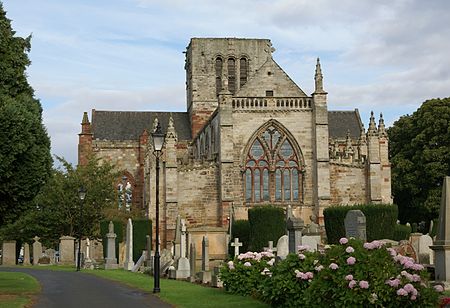Jon Cooper treated us to an enthusiastic and entertaining presentation on the development of 16th century warfare and its relevance to the siege of Haddington 1548/49. War, famine, disease and, of course, death are represented by the four horsemen of the apocalypse, all of which were visited upon Haddington during the time of the ‘rough wooing’. Scottish armies were raised from the able 16-60 yr olds in and around each burgh by a process which laid an obligation to serve for a period of 60 days, supplying one’s own food, weapons and armour. Refusal to serve, or absconding from the army later, resulted in a fine, or worse. However, there were ways around military service which a lucky few were able to exploit. This meant that relatively poorly trained, amateur, soldiery would have entered the field of battle, accompanied by relatively few, more experienced, commanders. Increasing the efficiency of the army involved the hire of professional soldiers (mercenaries), generally from Europe where many such experienced soldiers had plied their trade over many years and wars, in the service of anyone who could pay. Thus, present at Haddington were the Scots and English levies together with mercenaries of various nationalities, in particular French, Spanish and German. Haddington had been taken by the English who, with the aid of Spanish and some German mercenaries held the town against besieging Scots and French.
Jon took us on a somewhat blood-thirsty trip through the history of weaponry from the pike and halberd, through primitive guns and artillery, to the development of standardised and more reliable guns and artillery by the time of the siege of Haddington. Audience volunteers were induced to assist in demonstrations of pike usage, a chair being co-opted as a ‘horse’. Guns and artillery, however, were not in evidence, although descriptions of their effects on a massed group were graphically described to our suitably ranked assembly!
As to the siege, the town was defended by earthworks and artillery, and attacked by artillery and attempts, mainly by the French mercenaries, to take the town by storm. Meanwhile, the defenders and civilians inside suffered shortages of food and facilities to effectively deal with the injured and the sick. Disease, therefore, became a serious problem. With the failure to penetrate the defences over a period of many months, the Scots levies drifted away and the French decamped to Edinburgh (where, apparently, they made much mischief until banished to Leith)! The English then evacuated the town, and the siege was essentially over, with no significant political or military gain after more than a year. Haddington was then left to recover from the ravages of famine and disease and for the community to rebuild in the years following. Interestingly, the Haddingtonians were more comfortable with the English in charge than they would have been with the French mercenaries had the siege been successfully concluded (letters to Mary of Guise). They were, therefore, more supportive of the occupiers than one might expect of an invaded population.
Jon left us with an interesting thought – that although it is well known that Haddington prior to the siege had been a very prominent and politically very important Scottish burgh, after the siege it entered a long period of decline to become just another small, rural market town of little significance in the affairs of state. The town, therefore, never recovered its prominence after the events of the 16th century.
Peter R
